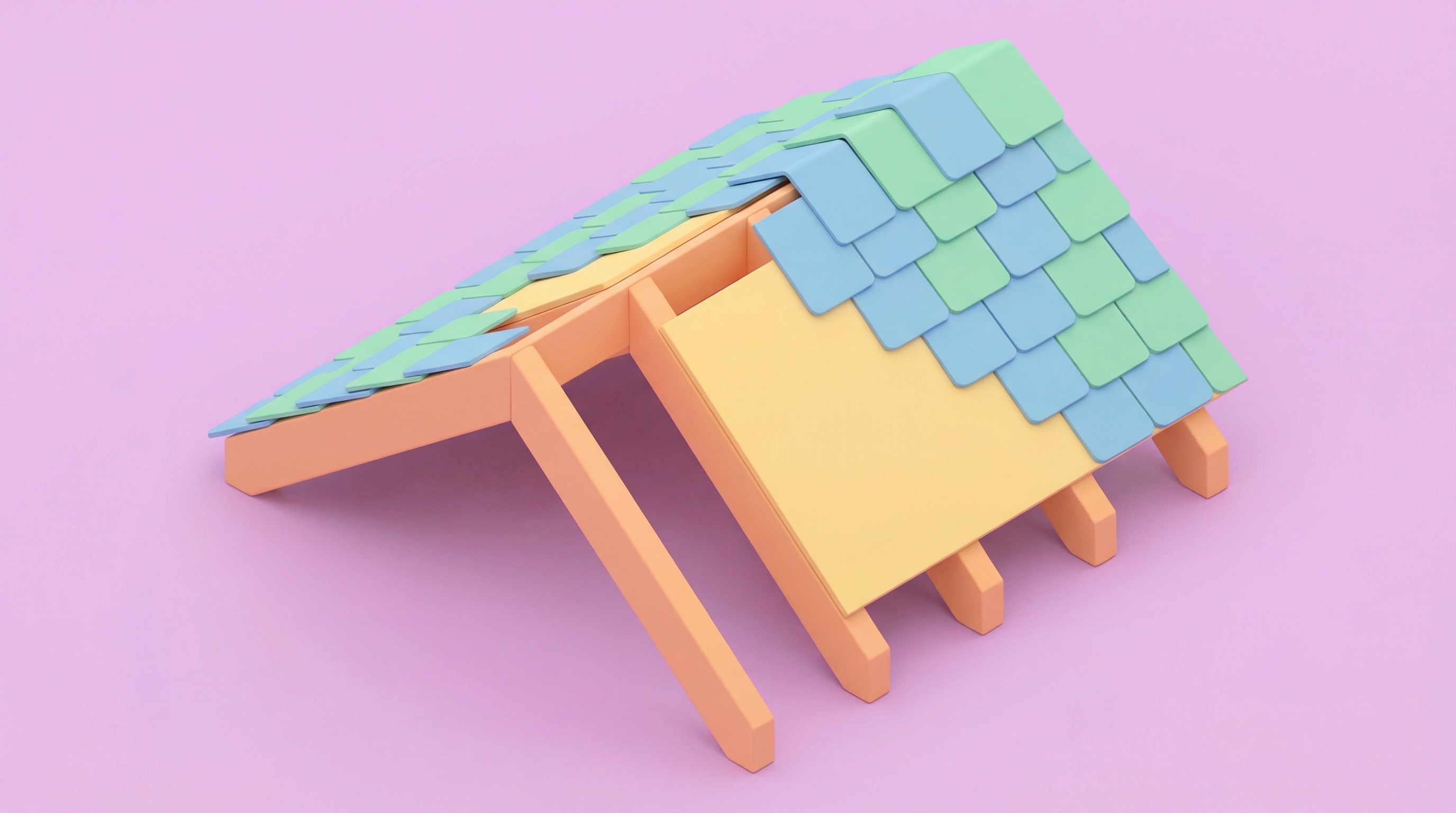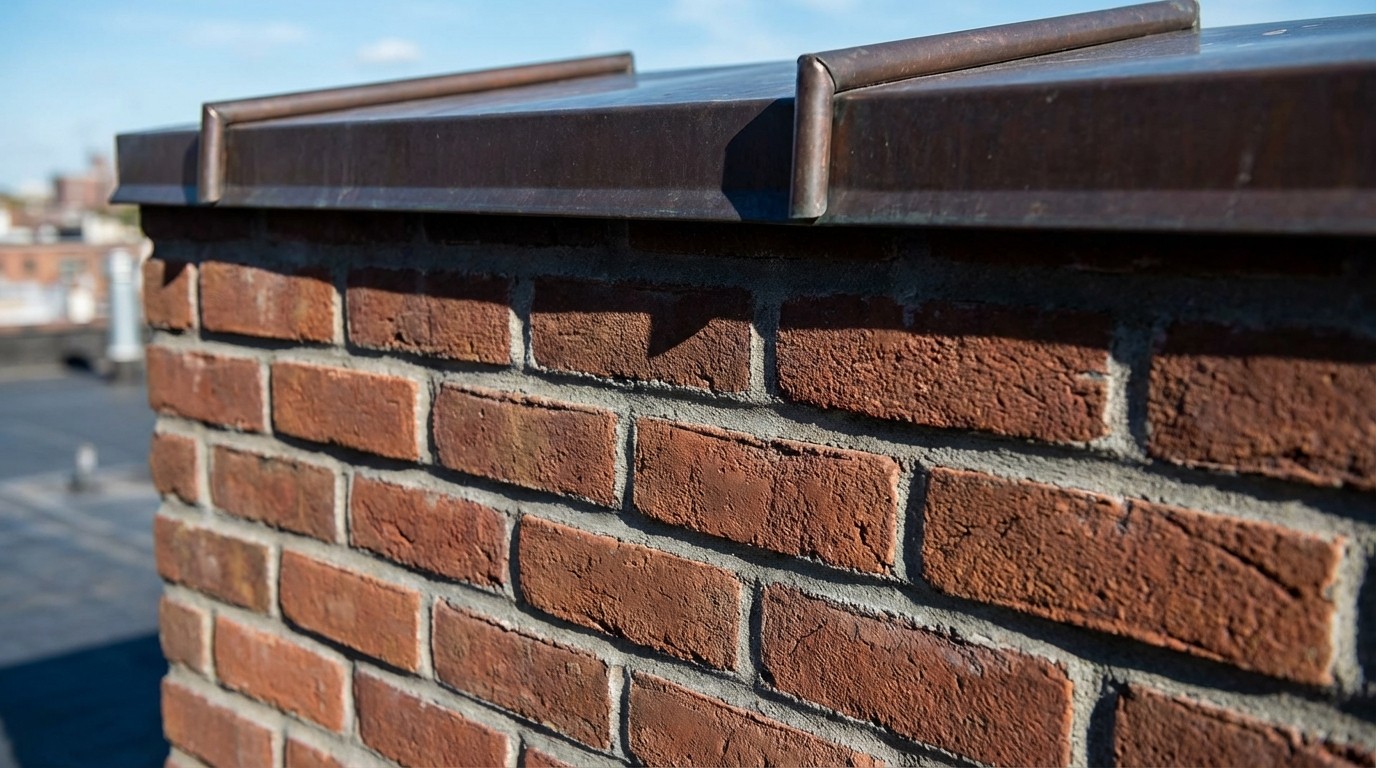Roof sheathing is the layer of wooden panels nailed to your roof's frame, creating the flat surface that everything else attaches to. Your shingles, underlayment, and flashing all depend on it.
Sheathing isn't something most homeowners encounter in everyday conversation, but it becomes important when you're getting quotes or planning a roof replacement. This guide covers what sheathing is, the different types, how to spot damage, and what replacement typically costs.
What Is Roof Sheathing
Roof sheathing is the flat layer of wooden boards or panels nailed directly to your roof's frame. It creates the surface that your shingles, underlayment, and flashing attach to. Roofers also call it roof decking or sheeting, so if you hear any of those terms, they all mean the same thing.
Think of your roof's structural frame-the rafters or trusses that create the triangular support system. Sheathing covers this framework like a protective layer, transforming an open frame into the solid surface that supports everything above it.
Here is what sheathing actually does:
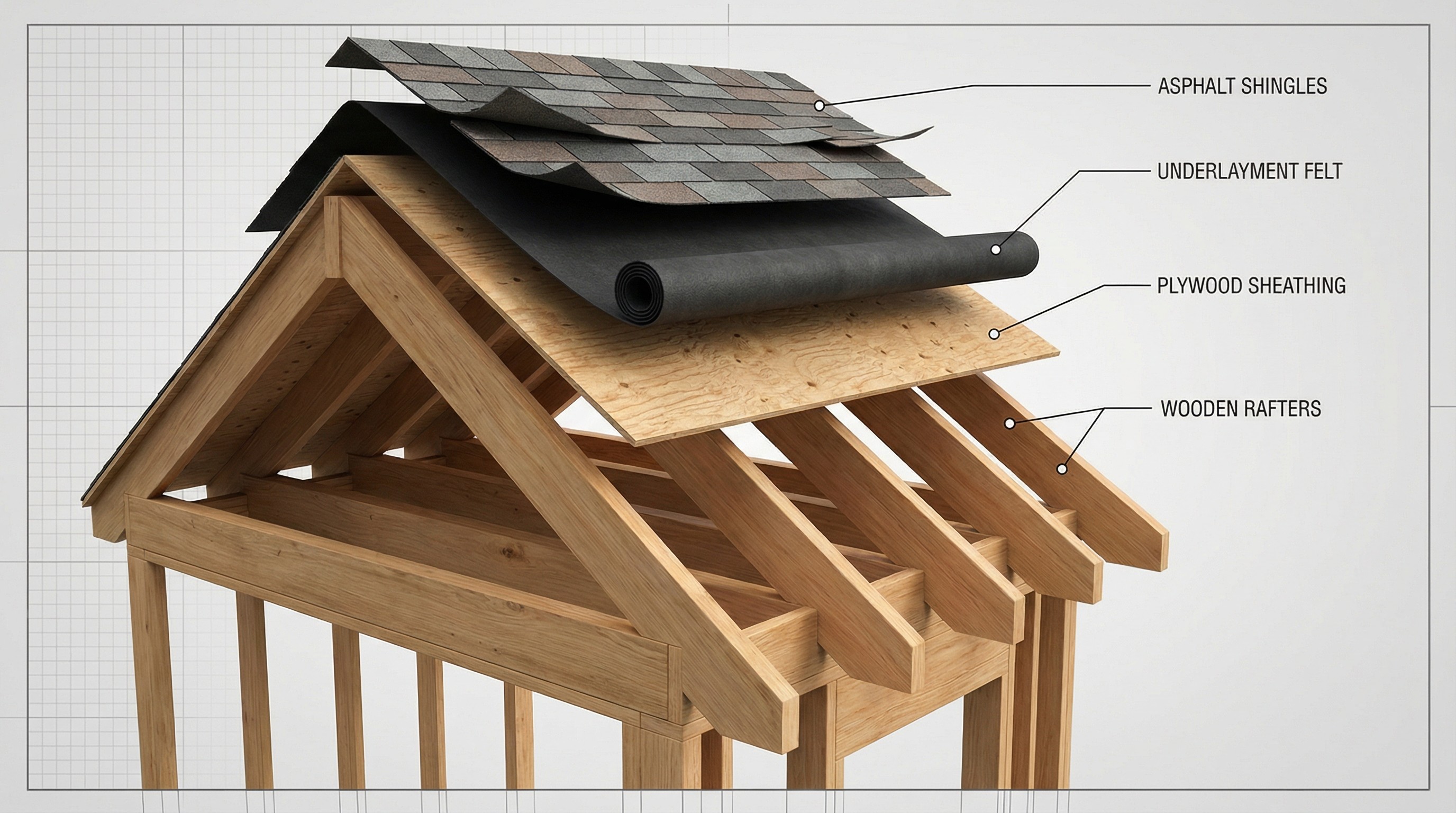
Carries weight: It supports your shingles, any snow that accumulates, and the roofers walking on it during installation.
Provides a nailing surface: Every shingle gets nailed through the underlayment and into the sheathing below.
Acts as a backup barrier: If shingles blow off or fail, the sheathing offers temporary protection until repairs happen.
When you get a roof replacement, your roofer will pull off the old shingles and inspect the sheathing underneath. If it looks solid, they install new materials right on top. If sections are rotted or damaged, they replace those panels first.
Types of Roof Sheathing Materials
Three materials make up the vast majority of residential roof sheathing. The one on your home likely depends on when it was built.
Plank Sheathing
Homes built before the 1970s often have individual wood boards running horizontally across the rafters. Small gaps between the planks allowed for airflow, which made sense for the roofing materials used at the time. Plank sheathing can still be structurally sound after 50 or 60 years, though many roofers recommend upgrading to panel sheathing during a replacement.
Plywood Roof Sheathing
Plywood is made from thin layers of wood veneer glued together with the grain alternating direction. This cross-grain construction makes it strong, stable, and resistant to warping. Plywood has been a go-to choice for roofing since the 1960s and handles moisture exposure better than most alternatives.
OSB Sheathing
OSB stands for oriented strand board. Manufacturers compress wood strands with adhesive to form large panels. OSB became the dominant sheathing material in the 1980s because it costs less than plywood and performs well in most conditions. The one drawback: OSB edges can swell permanently if exposed to water for too long.
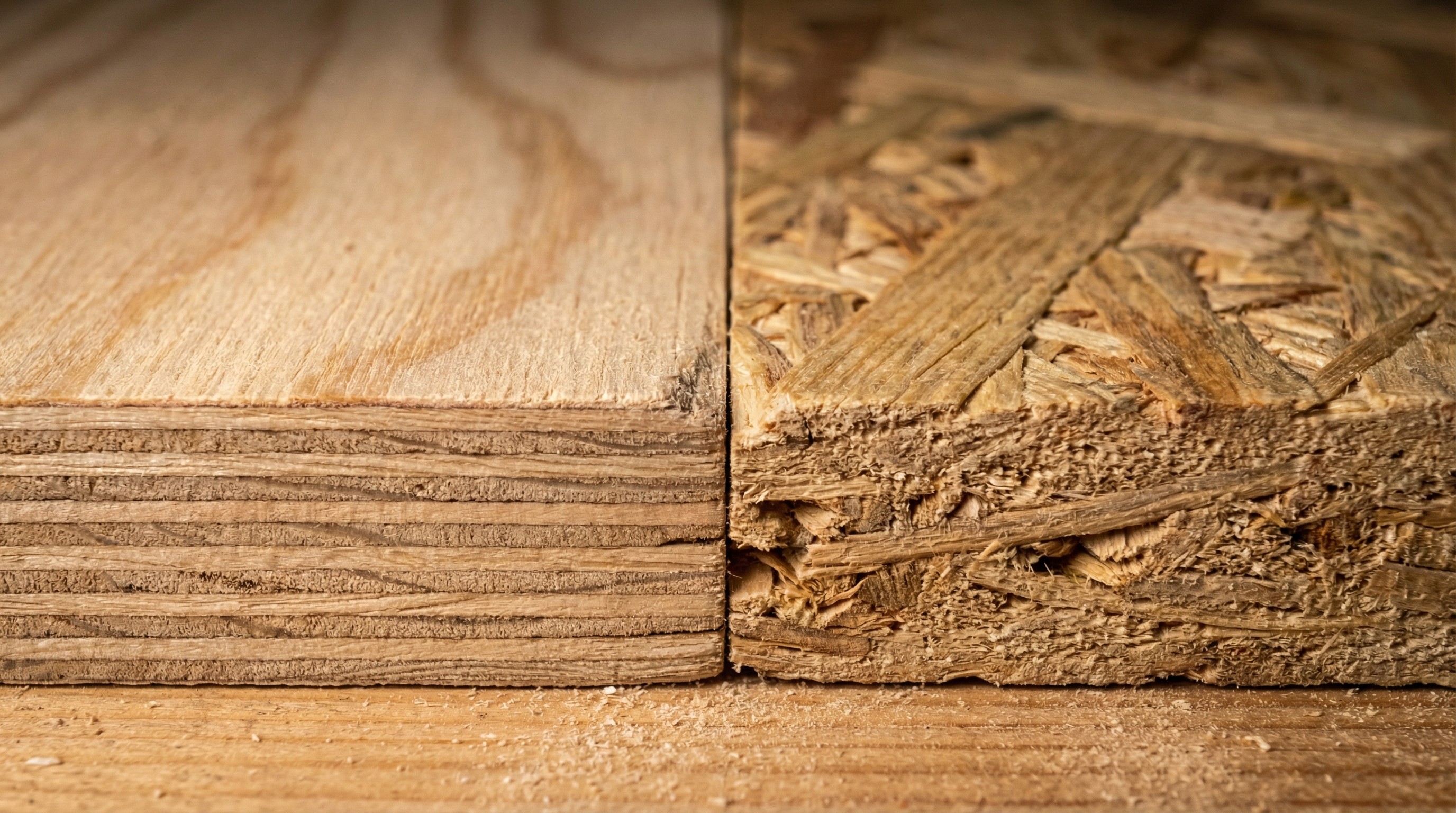
Material | Typical era | Key characteristic |
|---|---|---|
Plank sheathing | Pre-1970s | Individual boards with gaps |
Plywood | 1960s onward | Layered veneer, handles moisture well |
OSB | 1980s onward | Compressed strands, lower cost |
Plywood vs OSB for Roof Sheathing
Both plywood and OSB meet building codes and work fine for most roofs. The choice usually comes down to climate and budget.
Moisture Resistance
Plywood handles water better. If moisture gets under your shingles, plywood dries out and returns to normal. OSB tends to swell at the edges when wet, and once swollen, it stays that way. In humid climates or areas with heavy rainfall, this difference matters.
Strength and Durability
Both materials pass the same structural tests. However, plywood holds nails more securely over time, which can be relevant in high-wind areas where shingles experience more uplift force.
Cost Comparison
OSB runs about 15 to 20 percent cheaper than plywood per sheet. On a full roof, that gap can mean a few hundred dollars in material savings. Whether that savings outweighs plywood's moisture advantages depends on where you live.
Which Is Better for Your Roof
For Chattanooga's humid subtropical climate with our heavy rainfall and occasional severe weather, plywood often provides better long-term performance, though OSB can work well with proper installation and ventilation.
What Thickness of Roof Sheathing Do You Need
Thickness depends on rafter spacing. The farther apart your rafters sit, the thicker the sheathing panel required to bridge the gap without sagging.
Common Plywood and OSB Thickness Options
Most residential roofs use 7/16 inch, 1/2 inch, or 5/8 inch panels. Thicker panels cost more but feel more solid and provide better support. Homes with rafters spaced 24 inches apart typically require 5/8 inch sheathing, while 16-inch spacing allows for thinner options.
How Span Rating Determines Thickness
Every sheathing panel has a span rating stamped on it. You will see two numbers separated by a slash, like 24/16 or 32/16. The first number tells you the maximum rafter spacing for roof use. The second applies to floor applications.
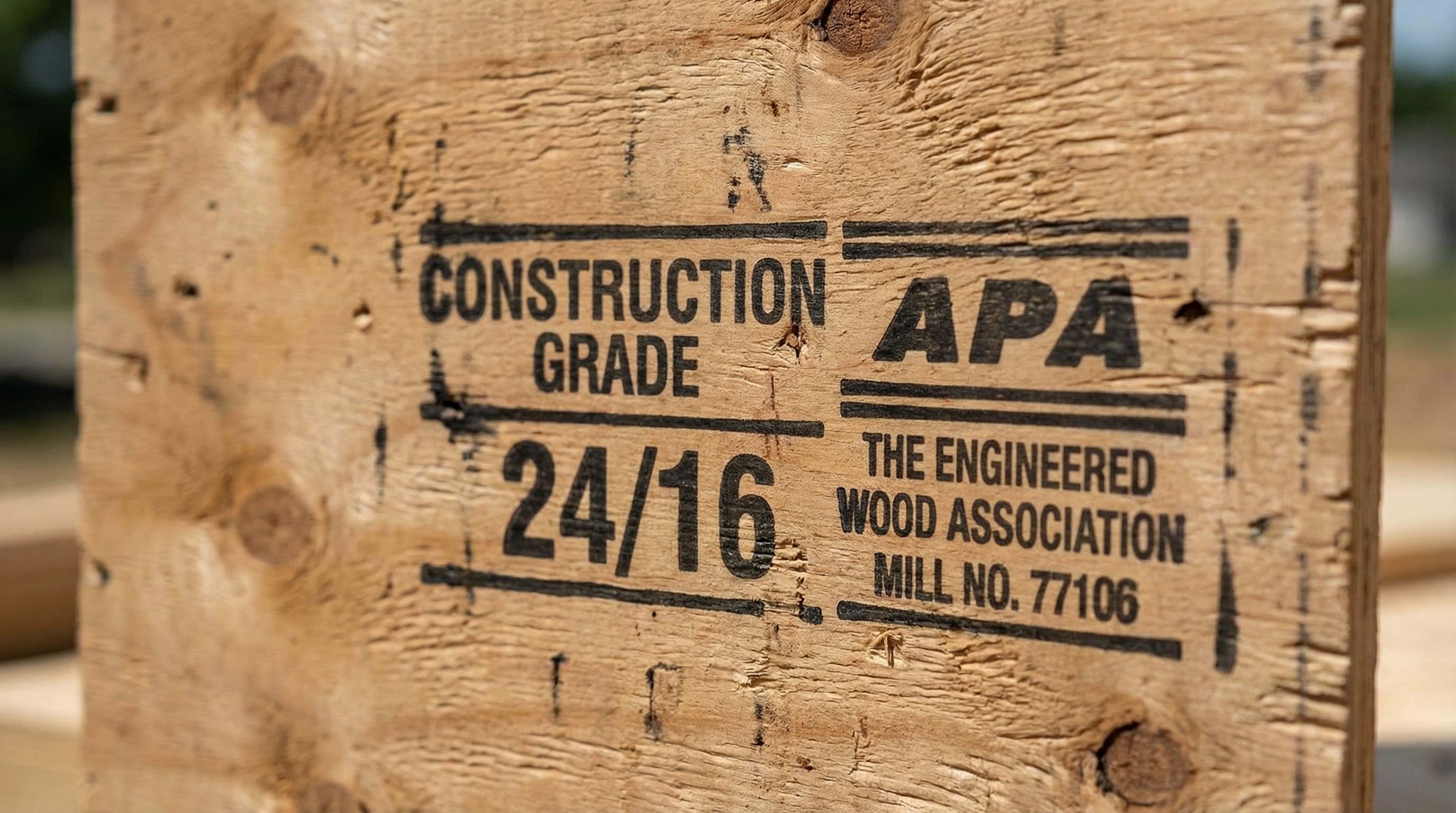
So a panel stamped 24/16 can safely span rafters up to 24 inches apart when used on a roof. If your rafters are 24 inches apart and you grab a panel rated 16/0, it will sag between supports.
Building Code Requirements for Roof Deck Sheathing
Local codes specify minimum thickness based on rafter spacing, snow loads, and wind exposure. Your roofer will know what your area requires. Inspectors check sheathing during re-roofing projects, so using the wrong thickness can create problems down the line.
Signs Your Roof Sheathing Is Damaged
Sheathing damage often stays hidden until a roofer tears off the old shingles. Still, some warning signs show up if you know where to look.
Sagging or Wavy Roof Surface
Step back and look at your roofline from the street. Healthy sheathing creates a flat, even plane. Dips, waves, or uneven sections suggest the wood underneath has weakened or started to rot.
Water Stains or Leaks in the Attic
Brown spots on your attic ceiling or along the rafters mean moisture has reached the sheathing. Even if the wood feels solid now, repeated water exposure weakens it over time.
Soft Spots on the Roof
When a roofer walks your roof and feels spongy areas, that indicates rot. Healthy sheathing feels firm and solid. Soft spots mean the wood fibers have broken down.
Visible Rot or Mold on Wood Sheathing
If you can access your attic, look at the underside of the roof deck. Black spots, crumbling wood, or a musty smell all point to sheathing that likely requires replacement.
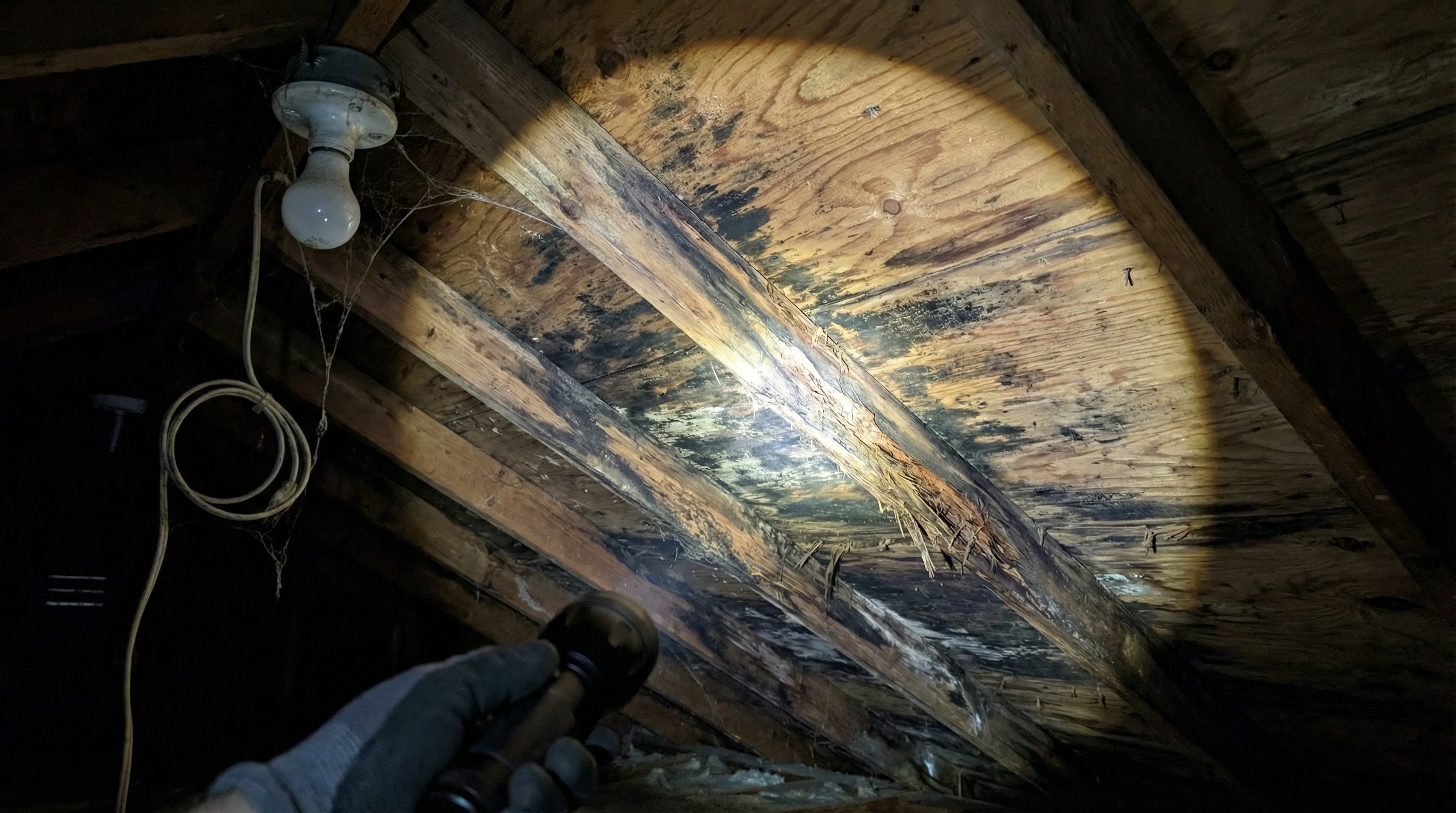
When Does Roof Sheathing Need to Be Replaced
Not every roof replacement involves new sheathing. Replacement becomes necessary in specific situations:
Storm damage: Hail, fallen branches, or wind-driven debris can crack or puncture panels.
Water damage: Prolonged leaks cause rot that weakens wood beyond repair.
Code compliance: Older plank sheathing may not meet current building standards.
Hidden deterioration: Roofers often discover problems only after removing old shingles.
A trustworthy roofer will always show you damaged sheathing and explain why replacement is necessary before proceeding with the work. If a contractor replaces sheathing without this transparency, it suggests they may not have your best interests in mind.
How Much Does Roof Sheathing Replacement Cost
Sheathing replacement adds to your total roof cost. The amount depends on materials, labor, and how many panels require replacement.
Cost per Sheet of Plywood or OSB
Materials are priced per 4x8 foot sheet. OSB typically runs $15 to $25 per sheet, while plywood costs $25 to $45 depending on thickness and grade. Keep in mind that lumber prices can vary significantly based on market conditions, so these ranges may shift. Your local quotes will reflect current pricing in the Chattanooga area.
Labor Costs for Sheathing Replacement
Labor adds to material cost. Replacing sheathing takes extra time because roofers have to remove damaged sections, cut new panels to fit, and secure them properly. Steep or complex roofs take longer and cost more.
How Sheathing Adds to Your Total Roof Replacement Cost
Sheathing replacement usually appears as a line item on your quote. Some roofers estimate how many sheets they expect to replace based on visible damage. Others quote a per-sheet rate for any damage discovered during the project.
Tip: Ask for the per-sheet cost in writing before work begins. This way, if your roofer finds more damage than expected, you will know exactly how it affects your final bill.
How Roofers Discover Sheathing Damage During Replacement
Most sheathing damage hides under the old shingles. Roofers inspect as they work, checking for rot, water stains, and soft spots after each section of shingles comes off.
Good roofers photograph damage and show you before replacing anything. This transparency matters because sheathing replacement adds to your bill. Knowing the per-sheet cost upfront helps you budget for surprises.
Line-item quotes make this process clearer. When sheathing costs appear as a separate line rather than bundled into a lump sum, you can see exactly what you are paying for and compare bids more easily.
Questions to Ask Your Roofer About Roof Sheathing
Before signing a contract, a few direct questions can reveal how transparent your roofer plans to be:
What type of sheathing do you recommend for my roof?
How do you handle unexpected sheathing damage?
What is your per-sheet cost if replacement is needed?
Will you show me the damage before replacing it?
Is sheathing cost included in your estimate or listed separately?
These questions help reveal a contractor's approach to transparency-something we prioritize when vetting roofers for our network. The contractors we work with welcome detailed questions because they understand that informed homeowners make better decisions.
How to Get Fair Quotes for Roof Sheathing Replacement
Comparing quotes from multiple roofers helps you spot fair pricing. When you only have one number, you have no way to know if it is reasonable. With three or four quotes, patterns emerge.
Look for line-item quotes that break out sheathing costs separately from labor, materials, and other expenses. Lump-sum quotes hide details and make comparison harder.
When you compare multiple quotes, you'll quickly see the range of fair pricing in your area and can identify any outliers-whether suspiciously low bids that might cut corners or inflated prices that include unnecessary markups. This comparison process is exactly why we connect homeowners with multiple vetted contractors.
At roofquotes.com, we connect you with vetted local Chattanooga roofers who provide detailed, line-item pricing for every aspect of your project, including sheathing replacement. This transparency means you'll know exactly what to expect-and what you're paying for-before any work begins.

